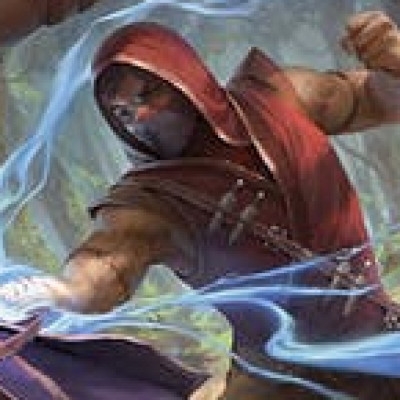The Aggro
Thus far, aggressive decks have not been very prevalent in Flesh and Blood’s Classic Constructed meta. The mainstream meta has generally been focused on midrange-oriented game plans that defend efficiently while delivering their offensive plan. And in my view, this has been one of the best ways to build strategies early in this game’s life. With the limited card pool, and with every player still learning a lot about this game, operating efficiently in your opponent’s turn is a great way to gain an edge. Flesh and Blood is a game of layers, and there are real levels to the skill curve within this game. Building a deck that can work both offensively and defensively is a great place to start, as you end up with decks that can both counter what an opponent is trying to do whilst allowing for a progressive game plan of your own on offense. Examples of these decks can be found across most of the classes. Take, for example, the predominant Warrior builds, which all include a sizable package of defense reactions and focus their aggression on climbing with the Dawnblade to score small chip damage in the long game.
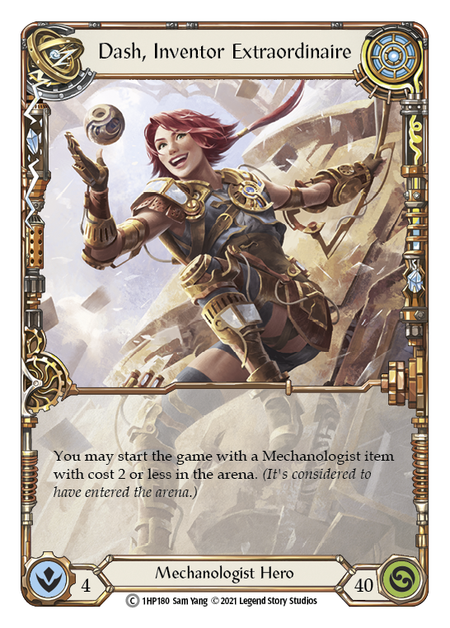
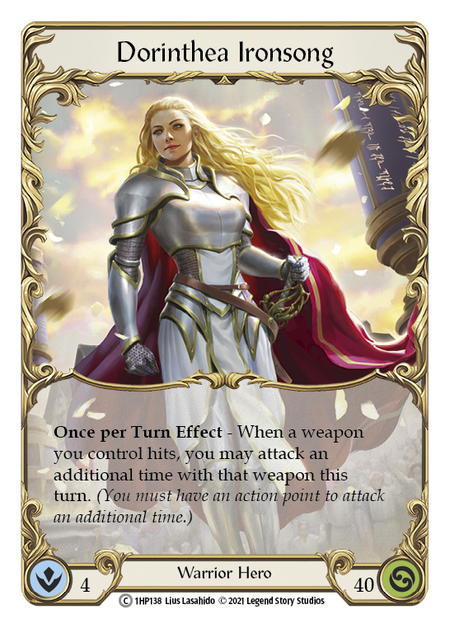
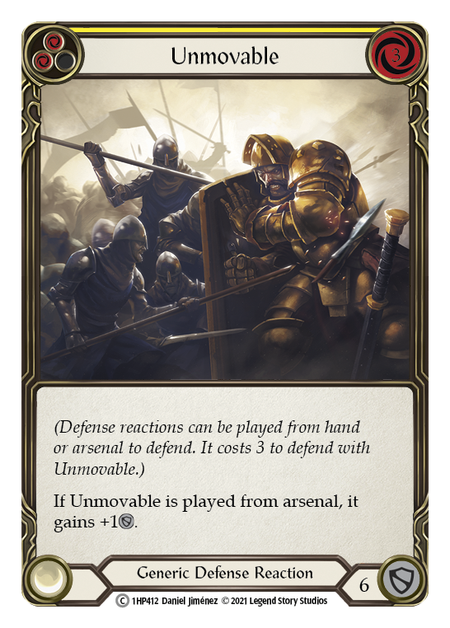
Warrior has been the gatekeeper of the format to date. Its fairly straightforward playstyle and likeability as a class has seen many players pick up the class and stick with it as their main deck. So when determining whether your newest theorycraft is viable for tournament play, you always have to ask yourself, “Can this deck beat Warrior?” And rightly so; the class is very good. It is also the reason why many decks have gravitated towards the midrange and control spheres; those are decks that can easily fit in defense reactions without hurting their game plan too much, and can afford to pay for cards like Unmovable.
Dorinthea is also the reason that the 2020 Classic Constructed season was dominated by midrange and control Dash. A deck like Dash's inherently preys on other midrange decks and the traditional Warrior builds, because the Mechanologist can play a defensive suite that lines up well against single weapon attacks, and has an inevitability in the endgame that outpaces Dorinthea's.
Dorinthea is the reason that the 2020 Classic Constructed season was dominated by midrange and control Dash... Because the format became all about Dash and Dorinthea, heroes that couldn’t beat either slipped away.
Because the format became all about Dash and Dori, heroes that couldn’t beat either slipped away. More importantly, the notion of true aggro decks never came to the forefront of the meta, because Warrior decks continued to show up in droves despite the difficult matchup into Dash- they could seemingly beat “everything else”, so this glaring weakness was considered acceptable.
But the metagame is evolving, and players' understanding of the game: how to attack and counter certain strategies, is improving rapidly. Notably, this has impacted how people view defense reactions. While defense reactions have a fantastic upside in generally helping combat an opponent’s game plan, they seldom advance your own plans. Defense reactions have a steep cost from a deck building perspective. As we see more and more tools become available to each class, we should be seeing less defense reactions played in favor of streamlined decks built around core strategies, decks that can be purely offensive (Ed: yum!!).
Is your deck asking the questions or trying to answer them?
Aggro decks ask the question of the format. True aggressive decks should be finding themselves in a good position in the meta, with the ability to pressure and punish Dash decks for playing cards that have no defense value and require taking turns off to set up. These aggressive decks can also be great at racing other offensive game plans, such as big turn setup decks (think Claws Brute and Viserai in particular). Aggro decks can be very threatening, and in this 3-part series I bring you three decks and strategies that position themselves as the aggressor.
Katsu, the Wanderer
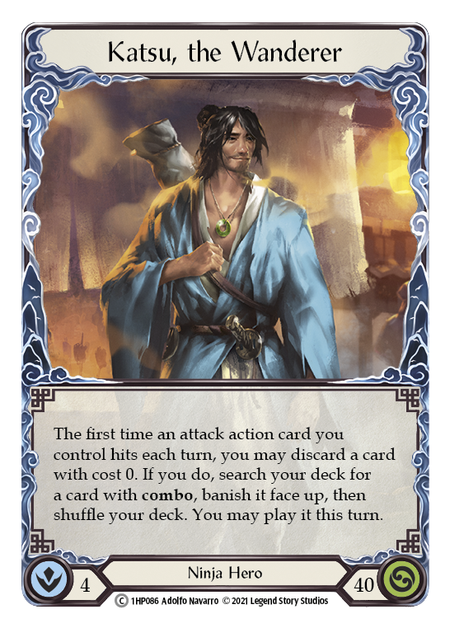
Katsu, the Wanderer has an interesting history in Classic Constructed. Upon initial release of Welcome to Rathe, many players saw this hero as the aggressive class from the four heroes, with his efficiently costed combo lines, dual weapons, and lower average defensive values across his cards. When the first premier level event rolled around, however, the most successful Katsu decks were actually midrange and full control. The finals of the Auckland Calling 2020 saw a Ninja mirror with both decks packing a full suite of defense reactions. Sasha Markovic's and Brendan Patrick’s creation, the “Ninja Turtle” control deck, was the last Ninja standing.
With the introduction of Arcane Rising, Katsu seemed to fall away in the competitive scene, with more combo-orientated decks becoming the go-to for what results the hero did put up. These builds aimed to play a much more tempo-based game, with a handful of defense reactions.
Crucible of War introduced a number of new cards for Ninja, including two new combo lines: the Torrent of Tempo line and the Soulbead Strike line. However, Katsu remained a fringe player in a Classic Constructed format dominated by Dash and Dorinthea.
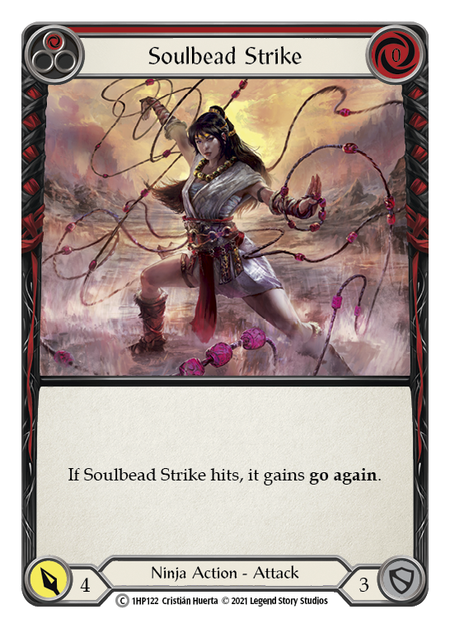
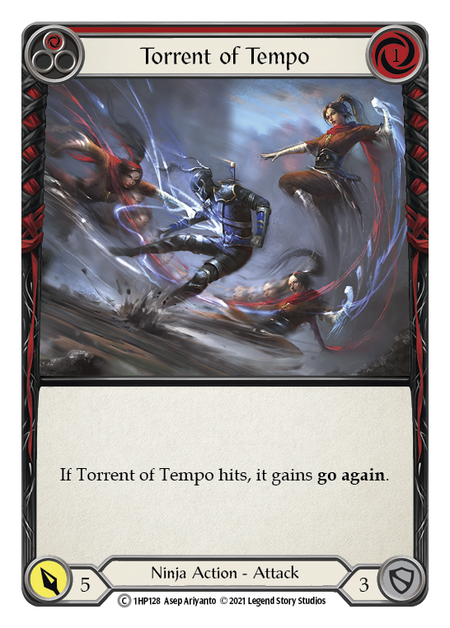
For me, the last part of this is the most surprising; with the introduction of efficiently costed cards like Torrent of Tempo and Soulbead Strike, Katsu had even more tools to head low to the ground and fight the format in a brutal and fast fashion. I believe that, had we been fortunate enough to have experienced a robust and well-attended Classic Constructed season after CRU, we would have seen aggressive Katsu decks do very well. Unless things change drastically with Monarch's release, aggro Katsu is a great way to combat decks trying to set up and bide their time for wins in the mid- to late-game.
Why Aggro Katsu in Classic Constructed?
Simply put: focus. It does one thing and it does it well. Aggro Katsu pressures decks that can’t pressure him back- or can’t pressure him back as effectively. This is a great counter to the Dash decks that ran the format, because turn after turn you can threaten them with Mask of Momentum activations, extra card draw from Plunder Run, and huge damage-dealing combo lines like the Surging Strike and Leg Tap lines. Because Control and Midrange Dash have to set up their Induction Chambers, this Ninja deck gets to take full advantage of an opponent that can’t consistently defend and doesn’t put pressure back in the early game. There really is a cost to playing a 2 cost, 1 pitch item that can’t defend!
With Rhinar rising in popularity with the advent of the Mandible Claw/Art of War deck, Aggro Katsu gains another favorable match with its playstyle. This deck wants to play with a five card hand, so Intimidate is pretty ineffective. Additionally, the attacks from this deck put a lot of pressure on Brutes to defend. You will find it easier to break up their own high-damage five card hands.
The Deck

Weapons
- Harmonized Kodachi (1)
Equipment
- Breaking Scales (1)
- Nullrune Gloves (1)
- Fyendal's Spring Tunic (1)
- Mask of Momentum (1)
- Snapdragon Scalers (1)
Loadout
- Art of War (Yellow) (3)
- Blackout Kick (Red) (1)
- Enlightened Strike (Red) (3)
- Ancestral Empowerment (Red) (3)
- Belittle (Red) (3)
- Energy Potion (Blue) (3)
- Minnowism (Blue) (3)
- Plunder Run (Blue) (3)
- Leg Tap (Red) (3)
- Hurricane Technique (Yellow) (1)
- Lord of Wind (Blue) (3)
- Torrent of Tempo (Red) (3)
- Minnowism (Red) (1)
- Plunder Run (Red) (3)
- Head Jab (Red) (3)
- Soulbead Strike (Red) (3)
- Surging Strike (Yellow) (3)
- Rising Knee Thrust (Red) (3)
- Rising Knee Thrust (Yellow) (3)
- Scar for a Scar (Red) (3)
- Surging Strike (Red) (3)
- Whelming Gustwave (Yellow) (3)
- Whelming Gustwave (Red) (3)
- Leg Tap (Yellow) (3)
- Mugenshi: RELEASE (Yellow) (3)
- Ravenous Rabble (Red) (3)
This deck has a core 58 cards designed to always be played in every matchup. They service the core game plan of going aggressive either as attack actions with Go Again/Combo or non-attack actions that enhance the output of your five card turns. Because of the rate that you burn through cards both from using them and discarding to Katsu’s ability, you will be running over 60 cards in every matchup. Generally, you will bring in anywhere from five to ten cards from the sideboard.
Below is a layout of the remaining cards which form the sideboard or preboard for this deck. These cards come into the deck for a variety of reasons and for specific matchups, which I'll get into further down. The key is that the deck remains balanced from both a resource and threat density perspective; critically, Go Again needs to remain in balance to ensure you can reliably deliver wide pressure turns.
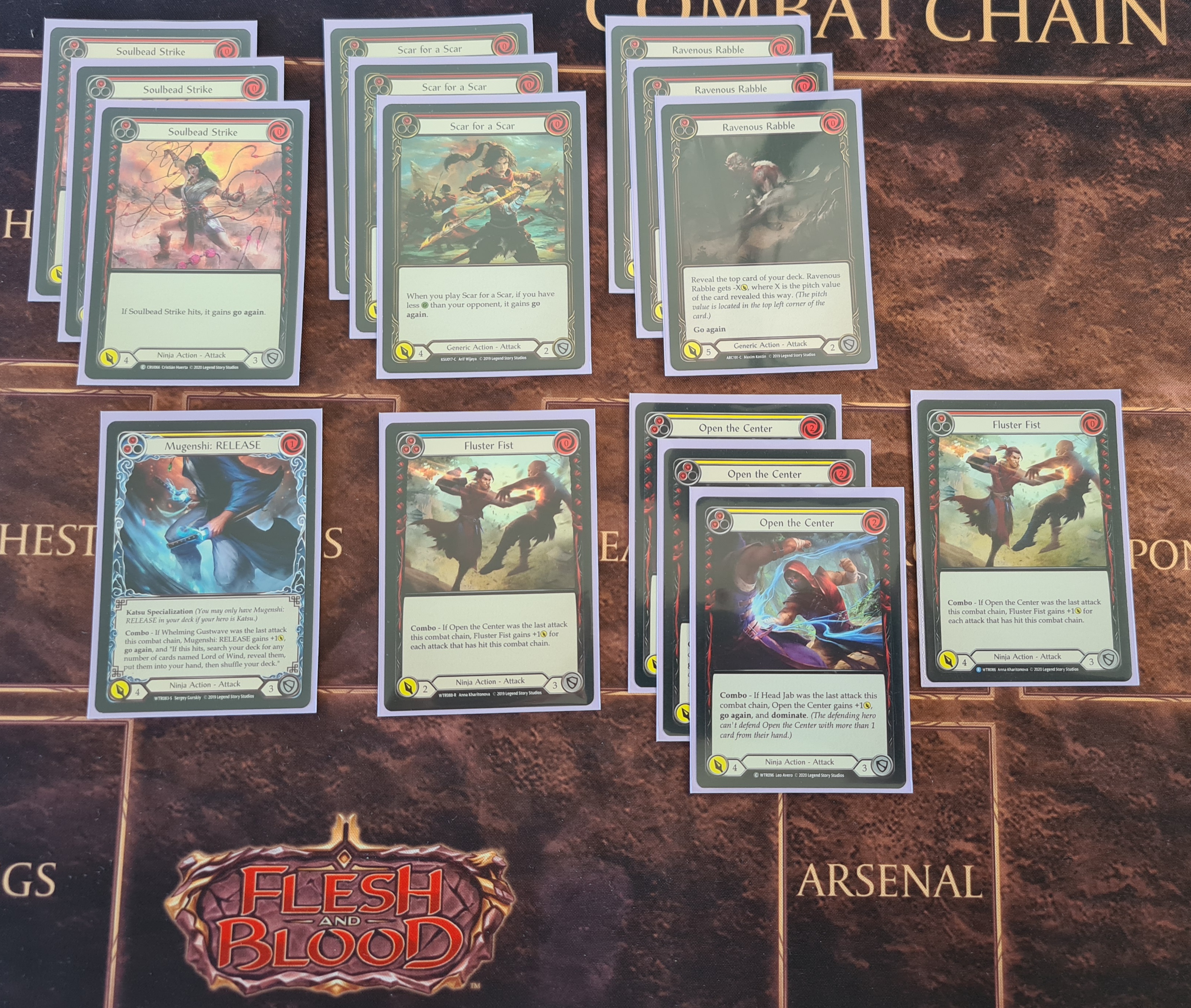
The Engine Room
Before we explore individual match ups let’s take a look at the key cards and combo packages in this deck.
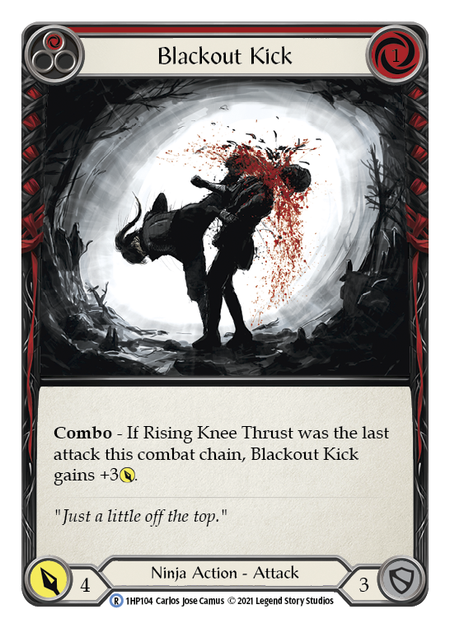
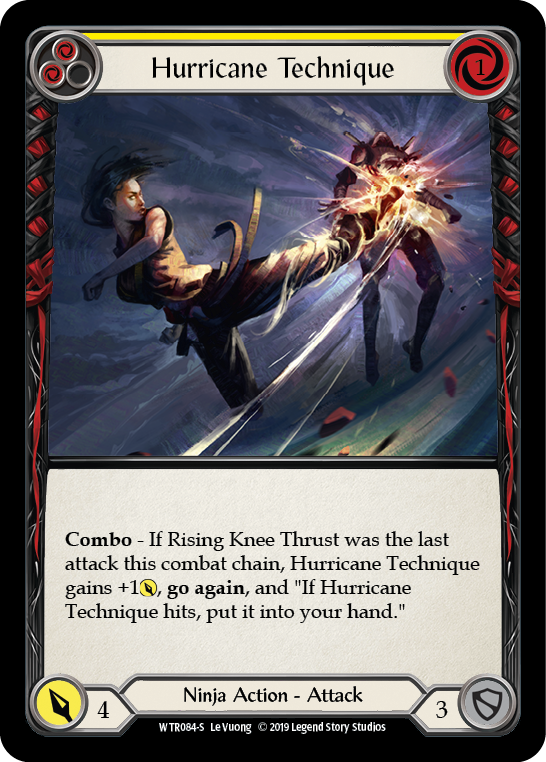
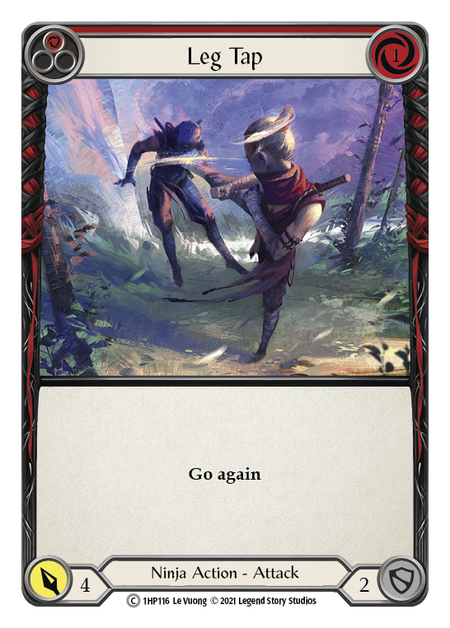
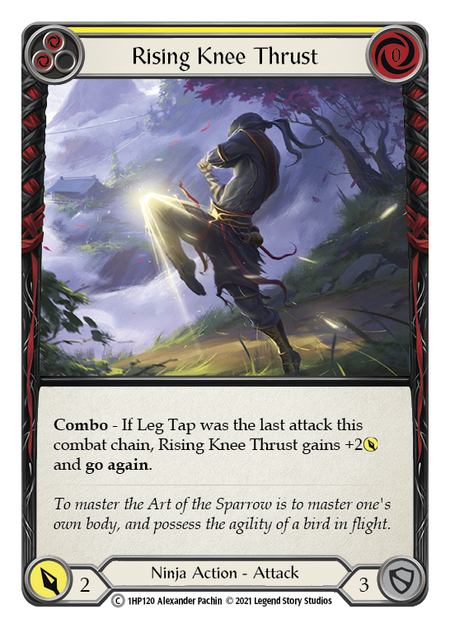
The Kick line (Leg Tap, Rising Knee Thrust, Blackout Kick/Hurricane Technique) is your core source of strong damage turns. Red Leg Tap is great because of how it functions both to activate Katsu’s search ability and to keep Mask of Momentum lines alive. At 4 damage, it requires either a defense reaction or equipment card involvement for a full block. Some of the best lines in this deck- and the ones that present the most damage- come from the Kick line.
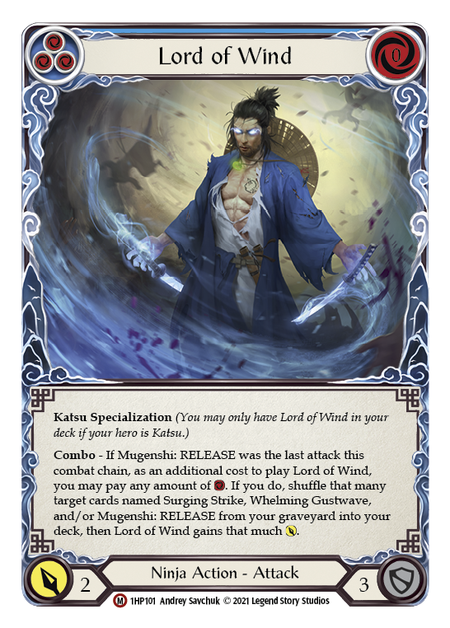
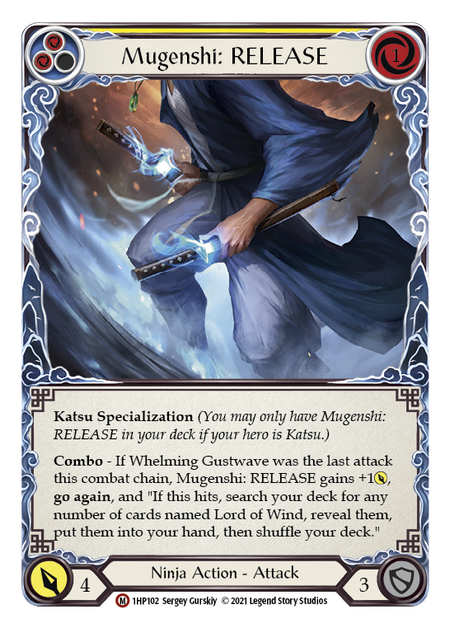
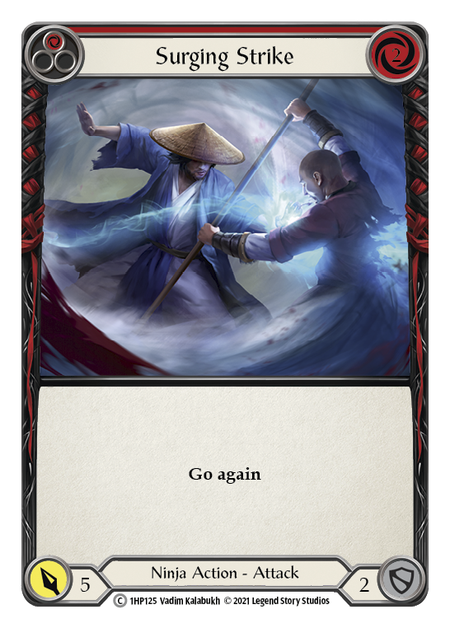
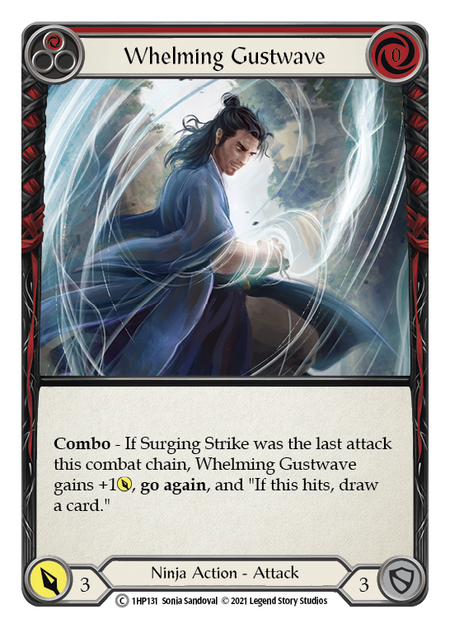
Surging Strike into Whelming Gustwave is a combo line that demands to be defended. Unlike the Kick combo line that is just pure damage, if an opponent does not defend the Surging line appropriately, they could find themselves binned out of the game pretty fast with Mugenshi: RELEASE into Lord of Wind for huge value. The first two cards in this combo line are super important, and one of the best ways to set these up is to simply arsenal one of them and await the other's arrival. This can heavily punish opponents for trying to block out the Surging Strike, as it will cost them two cards to do so and not prevent the Whelming from coming in.
While this combo line is more expensive, it can really swing tempo and even bust up your opponent’s plans for a big turn in the process. For this reason, the line is often at its best mid-game, as you ideally want the opponent to get greedy and try to get by with minimal blocking, leaving you with an opening to sneak Whelming or Mugenshi through with an Ancestral Empowerment.
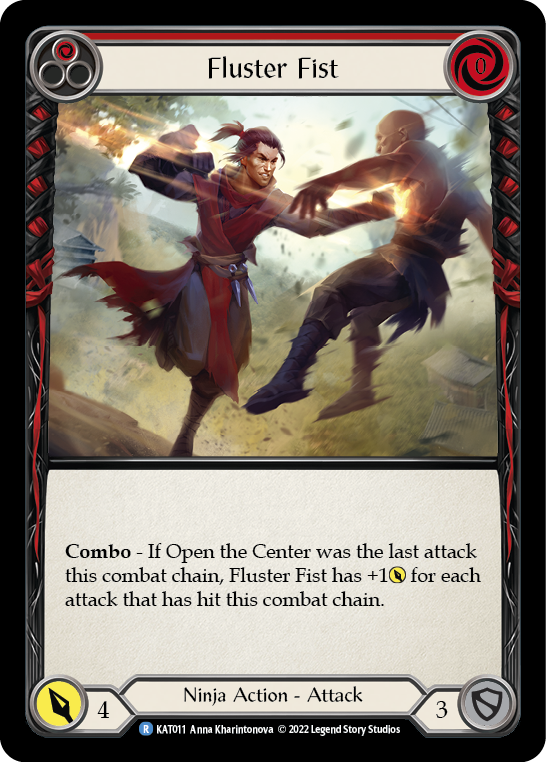
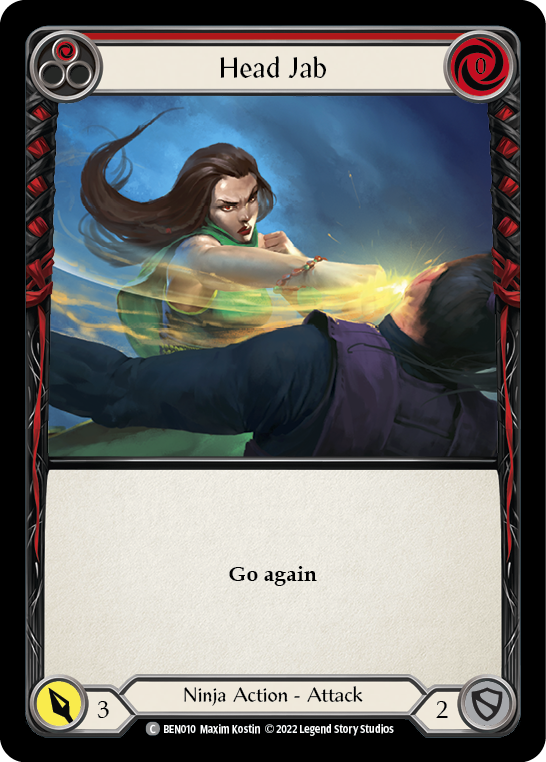
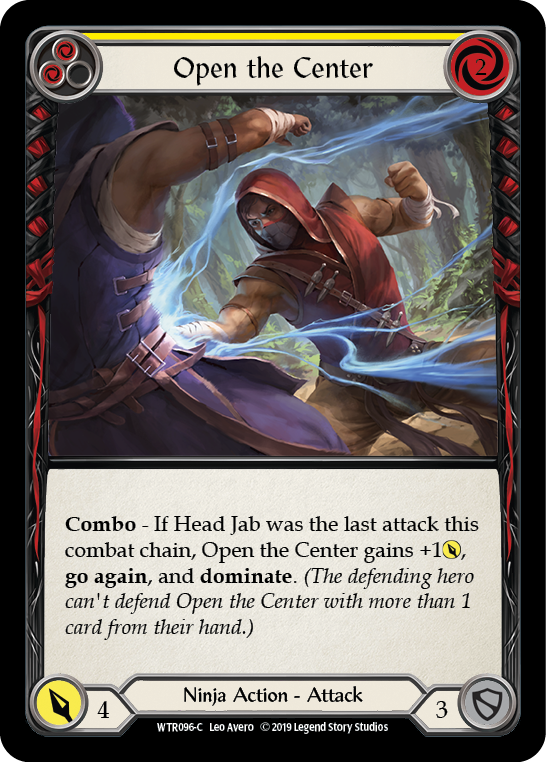
The Punch line is not as powerful as either the Kick or Surging lines, but at 0 cost, Head Jab is a great card for raw damage on a wide turn, especially paired with something like Plunder Run or Art of War. For this reason, the Jabs always feature in this list, while Open the Center and Fluster Fist wait on the sideboard. This 3rd combo merits inclusion when we want a truly wide finisher that is difficult to defend, or if fatigue is an issue and we simply need more cards in the deck. The latter reason is why blue Fluster Fist sits in our sideboard; when going over 65-66 cards, it is important to add that extra blue to keep the resource ratios where we need them.

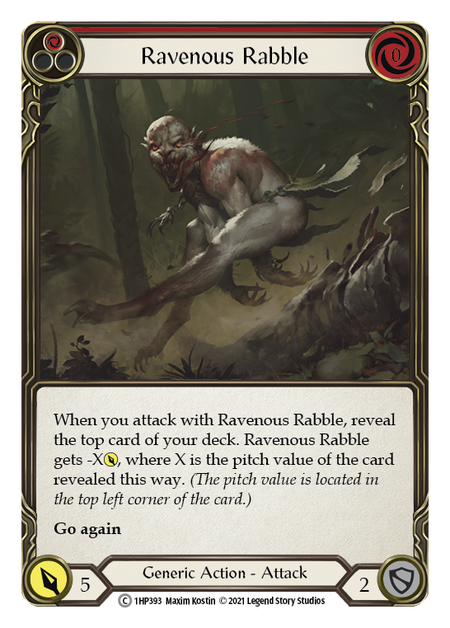



The remaining attack actions in the deck act as the supporting cast, helping Katsu go wide, present significant damage, and threaten Mask of Momentum and Katsu triggers. The core of these consists of Enlightened Strike and Torrent of Tempo red, both of which are in the main 58. Scar for a Scar, Ravenous Rabble, and Soulbead Strike provide additional sideboard options. The reason these last three aren’t always played is to keep us as close to a 60-card deck as possible. This nets us the most threatening hands and reduces the clutter that keeps our powerful combo lines from coming together naturally. However, they are important to enable the go wide aggressive strategy, and at a straight 60 cards we can risk running out of gas in a lot of matchups.
Each of these attack actions also serves a different role in specific matchups. For instance, Scar for a Scar is a fantastic card against decks that want to race and trade damage; but against a deck that wants to use its life as a resource while setting up, or one you expect to sit at lower life than you, it is just a liability.
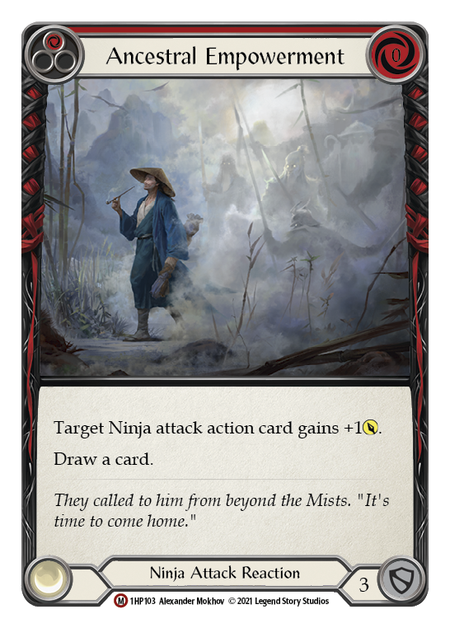
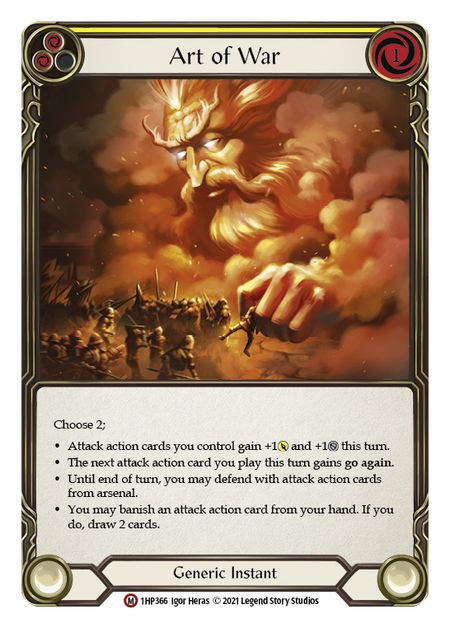

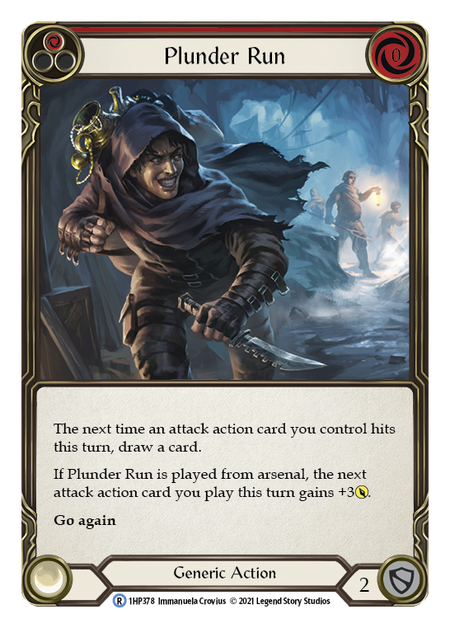
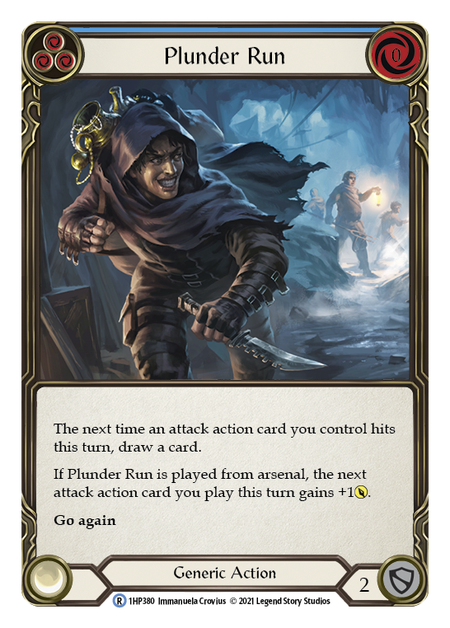
The non-attack actions play a very important role in this deck as enablers that increase the output of the five card turns. The numbers are super tight to ensure we don’t frequently draw multiple non-attack actions in a hand and lose output potential (the same reason there isn’t a defense reaction in sight!)
Plunder Run, with its card draw threat and a +3 attack in red, is an important pillar of this deck. Alongside Art of War, it makes every attack a real threat and brings low damage nuisances up to 4+ damage threats. Art of War can recycle an average hand, and sometimes enables a wide turn from a hand without natural Go Again. The blue Plunder Run is primarily a resource card, but has utility if you draw multiple blues in a turn.
Ancestral Empowerment not only replaces itself, defends for 3, and can be discarded to Katsu’s ability, but it also helps push attack actions over the top to secure critical on-hit effects. That can be crucial to really swing and snowball tempo.
Energy Potion, while a resource card, can also be played to set up for devastating five card hands mid- to late-game. An E-Pot and five other cards can all but guarantee you reach those combo line finishers like Lord of Wind and Hurricane Technique.
Core Strategy & How to Play the Deck
This is a true aggro deck, with the aim being to take tempo and keep it by using your life total as a resource. Defending is kept to a minimum, as the deck just simply doesn’t do it well. Five card hands are very important, and often it is correct to hold back a red attack action for arsenal even if you could play on the end of a chain. This ensures you can swing back next turn with a wide threat density from a five card hand.
It's fairly sub-optimal to play a combo card when the combo effect isn't active, and unless you have multiple to arsenal, you are much better off setting it and waiting for the combo partner. The amount of Mask of Momentum triggers you force through, Plunder Runs that draw a card, and devastating Art of War turns will determine the outcome of a vast majority of your matches with this deck.
Matchups:
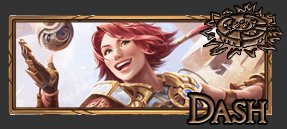
The big bad man of the current Classic Constructed format, a deck designed to kill off mid-range and control decks by out valuing them and out defending them. However, these decks struggle to defend and stave off go wide aggressive decks, and every chamber they draw is another opportunity to get off a big turn through their inability to defend optimally. You want to finish this game before the can get multiple chambers setup and ensure you get maximum value on the turns they have to take off to setup. The best card in this match up for them is actually Command and Conquer if they play it, as it can threaten to rip up your powerful five card hands. In general though you have no reason to ever be defending in this match up outside of having dead cards or possibly into Command.
In comes…
+3 Ravenous Rabble
+3 Soulbead Strike
+1 Scar for a Scar
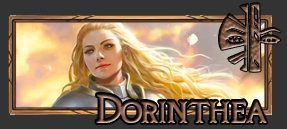
This is certainly the hardest match up for this deck, but it’s not an impossible one to win. The main issue here is that you don’t defend well and they threaten very powerful on-hit effects with cards like Steelblade Supremacy and Warriors Valour. The plan is this match up is to race, make them have to defend your key turns and keep the tempo in the match. Key cards for this plan are Plunder Run, Art of War and the Surging Strike Line.
In comes…
+3 Souldbead Strike
+3 Scar for a Scar
+1 Mugenshi: RELEASE
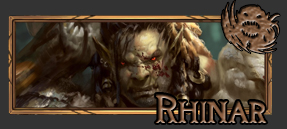
Another favourable match up here, your deck plays very well against Intimidate and being able to swing back with a full hand. It is important to sideboard with five card hands in mind, and often this match becomes a bit of a race with you leaking damage most turns and them just looking for those big turns to go off with Bloodrush Bellows. Some Rhinar builds will opt to try and value you out with Romping Club, which is a good way to play vs traditional ninja decks. However the damage is just too much to sustain through as Brute on that plan against this build, so you are more than happy if that is their approach to the match up.
In comes...
+3 Ravenous Rabble, +1 Fluster Fist red, +1 Fluster Fist Blue, +3 Open the Center. Can also bring in 2 Soulbead Strike if you believe they are on a plan to try and grind you out of cards by defending and using Club.
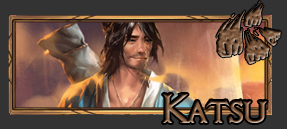
Into traditional Ninja builds, the biggest challenge is you don’t defend as well and an optimally timed Flic Flak can be punishing. Get on the front foot and try to stay there.
In comes…
+3 Open the Centre, +1 Fluster Fist Red, +3 Scar for a Scar, +1 Mugenshi: RELEASE
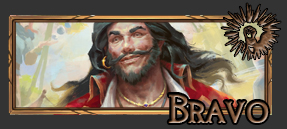
In comes…
+3 Ravenous Rabble
+2 Scar for a Scar
+1 Mugenshi: RELEASE
+1 Soulbead Strike
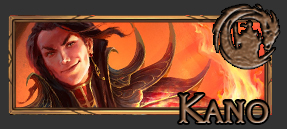
In comes…
+3 Ravenous Rabble
+1 Soulbead Strike (+2 Soulbead if going first)
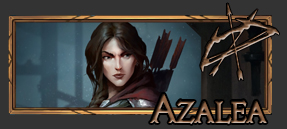
One match up where you do have to do some pretty active defending to avoid the punishing on-hit effects of Red in the Ledger and co. For that reason we sideboard to optimise some three to four card hands.
In comes…
+3 Scar for a Scar
+3 Soulbead Strike
+3 Open the Center
+1 Fluster Fist Red
+1 Fluster Fist blue
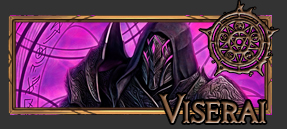
OTK and mid-range lists seem to be most popular right now, with that in mind.
In comes…
+3 Ravenous Rabble
+1 Mugenshi: RELEASE
+3 Soulbead Strike
Aggressive Kodachis into a wave of low costed attack actions and combo attacks is a very good way to approach the current meta in my view, with favourable match ups into Dash and Rhinar this strategy can certainly be competitive and prey on two of the top decks right now.
Hopefully you have enjoyed part one of this series focusing in on aggressive strategies in the Classic Constructed format and that this can been a useful piece on an aggressive strategy for the Ninja class. Let me know what you thought of the format, strategy and deck list in the comments and any other questions you might have in relation to this 3-part aggro series. Until next time, happy gaming.





